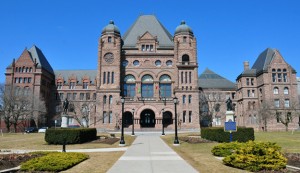Highlights of Ontario’s budget for 2021
 The Ontario government has already unveiled its second budget during the Covid-19 pandemic. The budget is designed to stimulate economic growth and accelerate the financial recovery that will take years.
The Ontario government has already unveiled its second budget during the Covid-19 pandemic. The budget is designed to stimulate economic growth and accelerate the financial recovery that will take years.
Here are the key assumptions for investment spending and various initiatives planned in a budget of $ 186 billion.
Huge expenses and the amount of the assumed deficit:
– Ontario’s planned deficit is $ 33.1 billion and is lower than in 2020, which was $ 38.5 billion
– the exit from the deficit is planned for the turn of 2029/2030
– if the economic growth exceeds current plans, Ontario may turn out to be positive at the turn of 2027/2028. If, on the other hand, the economic growth is slower than assumed, the budget may not balance itself until the turn of 2031/2032.
Billions to defend against Covid-19
– Ontario plans a budget of $ 1 billion to continue vaccination, which it describes as the highest priority for the government
– the province plans to spend $ 2.3 billion in 2021 and 2022 to test and track contacts related to Covid-19
– The budget of $ 1.8 billion to provide care for patients with Covid-19 and to tackle the backlog of operations caused by the pandemic.
Another support for small businesses
– Small Business Support Grant returns with the second round of payments for businesses that lost income during the pandemic
– About 120,000 small businesses that received a payment in the first round will also receive a payment in the second round of between $ 10,000 and $ 20,000. Business owners do not have to reapply for support.
– Ontario will allocate $ 100 million to a tourism and related business support program, each of which will receive one-off payments of between $ 10,000 and $ 20,000.
Money for families
Ontario Covid-19 Child Benefit has been doubled and will come back in the third round, this time offering a one-time payment of $ 400 per child and $ 500 per child with special needs
– the province of Ontario will increase the child care tax credit, called CARE, by 20%, which will be raised from an average of $ 1,250 to $ 1,500.
Long-term care
– The budget will provide $ 2.3 billion over the next four years for the long-term care sector, up from previously announced $ 1.75 billion
– the money from this pool will increase the availability of beds from 20,161 beds in 2025 to 30,000 beds in 2028
– the province advises that beds will be available in both the private and public long-term care sectors.
Other assumptions
– $ 8.4 million for the coming three years to cover the costs of redirecting emergency calls from OPP to mental health services
– construction of a new wing for inpatients residing at the William Osler Health System’s Peel Memorial Hospital in Brampton
– an additional $ 175 million to support mental health and addiction care
– tax credit for training for a new profession, which will offer up to $ 2,000 to approx. 230,000 people in 2021. Only residents – residents between the ages of 26 and 65 will be subject to it.
– Ontario will also spend an additional $ 2.8 billion to bring broadband internet to more people in the province by 2025.


